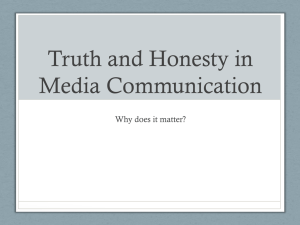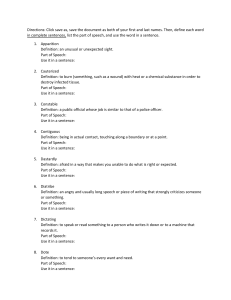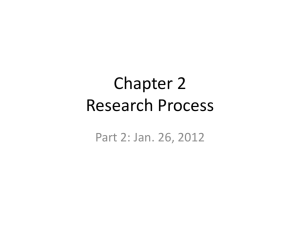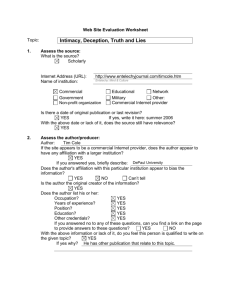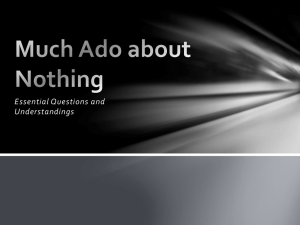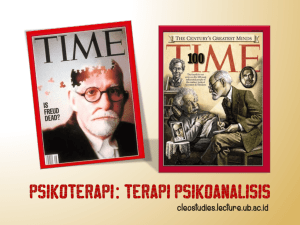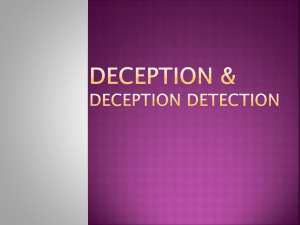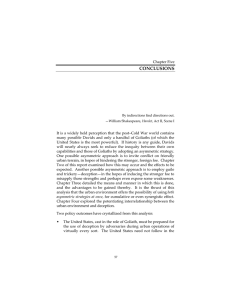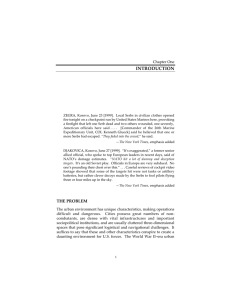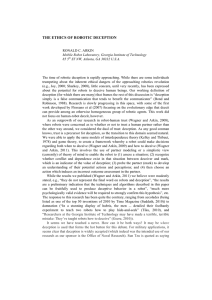PREFACE
advertisement
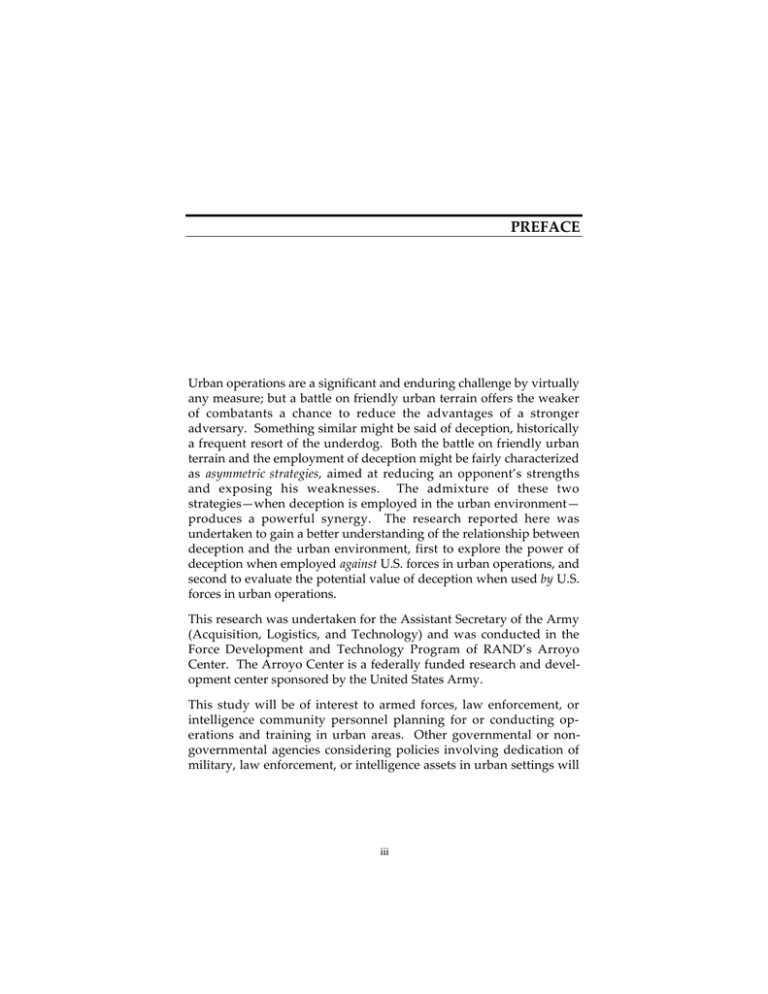
PREFACE Urban operations are a significant and enduring challenge by virtually any measure; but a battle on friendly urban terrain offers the weaker of combatants a chance to reduce the advantages of a stronger adversary. Something similar might be said of deception, historically a frequent resort of the underdog. Both the battle on friendly urban terrain and the employment of deception might be fairly characterized as asymmetric strategies, aimed at reducing an opponent’s strengths and exposing his weaknesses. The admixture of these two strategies—when deception is employed in the urban environment— produces a powerful synergy. The research reported here was undertaken to gain a better understanding of the relationship between deception and the urban environment, first to explore the power of deception when employed against U.S. forces in urban operations, and second to evaluate the potential value of deception when used by U.S. forces in urban operations. This research was undertaken for the Assistant Secretary of the Army (Acquisition, Logistics, and Technology) and was conducted in the Force Development and Technology Program of RAND’s Arroyo Center. The Arroyo Center is a federally funded research and development center sponsored by the United States Army. This study will be of interest to armed forces, law enforcement, or intelligence community personnel planning for or conducting operations and training in urban areas. Other governmental or nongovernmental agencies considering policies involving dedication of military, law enforcement, or intelligence assets in urban settings will iii iv The Art of Darkness: Deception and Urban Operations likewise find herein material of value in determining the risks and potential costs or benefits of such policies.
